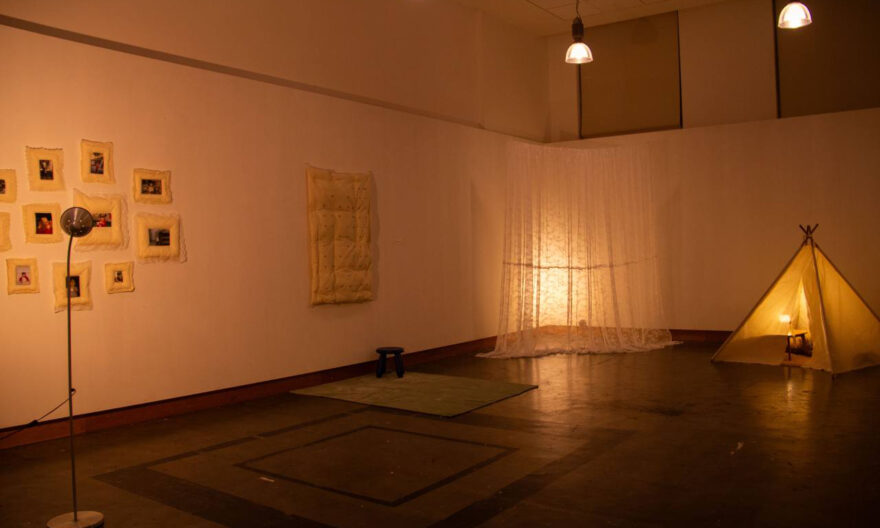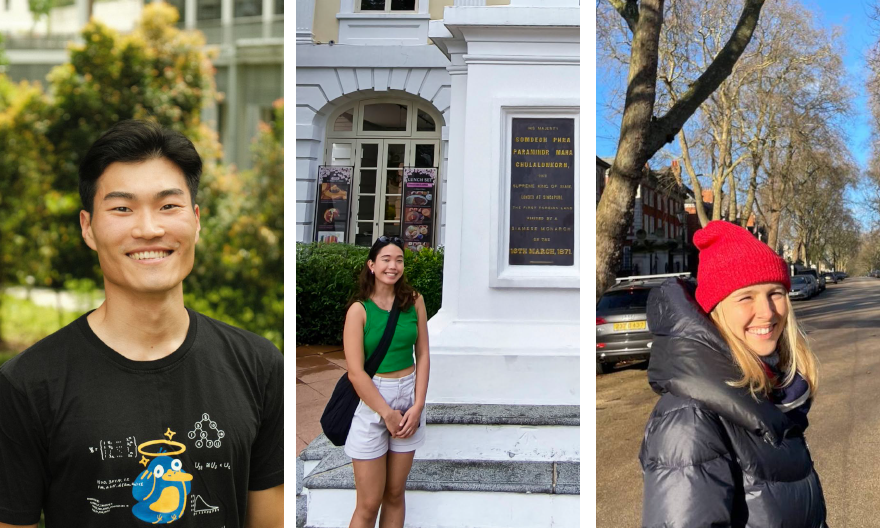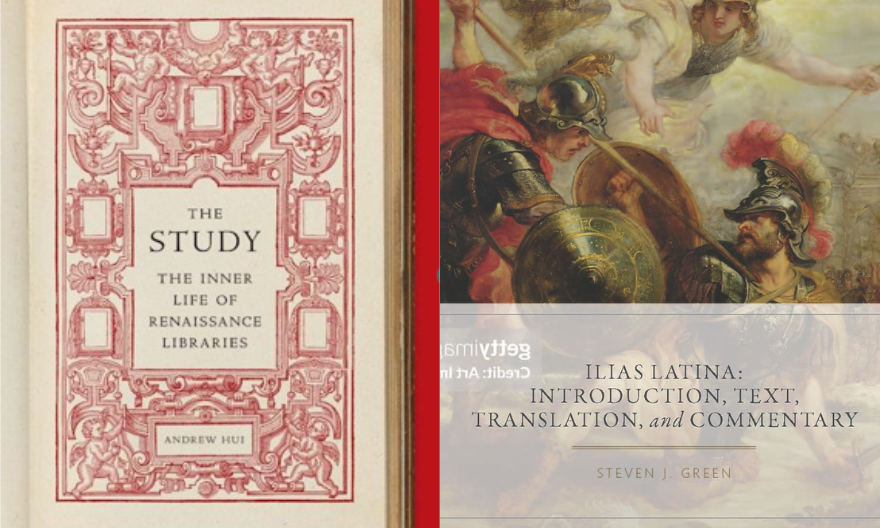Yale-NUS faculty and students launch website showcasing qualitative campus maps
Website compiles students’ map submissions of their varied experiences around the Yale-NUS College campus
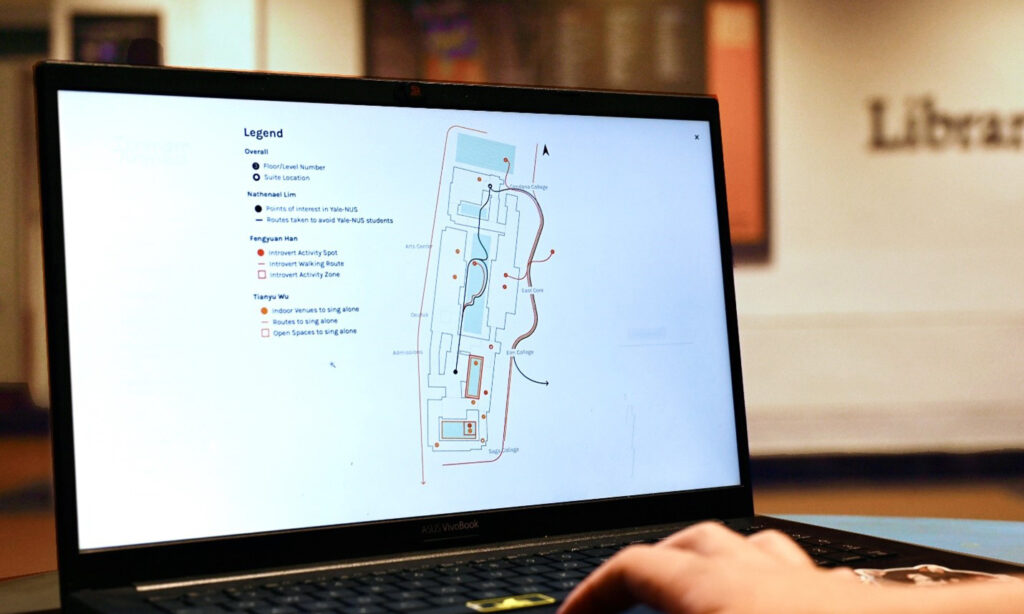 The Yale-NUS QMaps is available on a website. Image by Loe.
The Yale-NUS QMaps is available on a website. Image by Loe.
Maps do not merely point us to the correct classroom or the nearest restroom. The Yale-NUS QMaps project showcases qualitative maps of the College campus, in which individual user experiences of various campus spaces take centre stage instead. These maps are accessible via the Yale-NUS QMaps website, which will be launched on 10 March 2023.
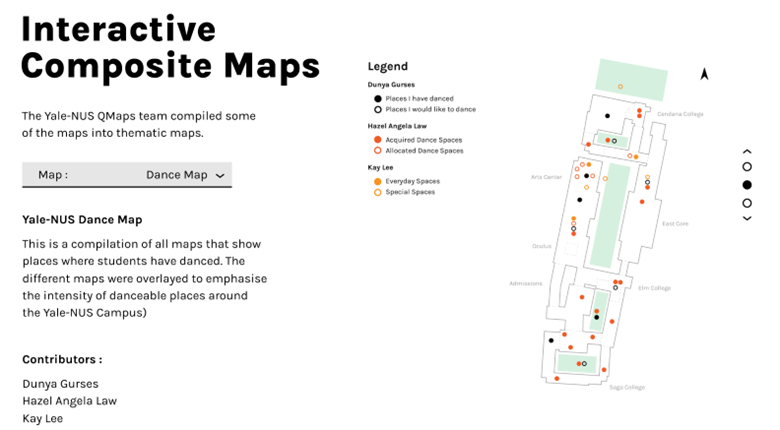 A composite map of dance spaces on campus, based on maps contributed by students from the Geospatial and Demographics Methods course. Image taken from the QMaps website.
A composite map of dance spaces on campus, based on maps contributed by students from the Geospatial and Demographics Methods course. Image taken from the QMaps website.
The QMaps project has its roots in the final assignment for the Geospatial and Demographic Methods course conducted last semester. The course equipped students with skills to use Geographical Information Systems (GIS) to make maps and conduct spatial analysis with open data. The final assignment invited students to represent their experiences and memories of different campus spaces on a map. Students were free to create their maps via different means, so long as they presented the information on a map using points, lines, or polygons that were geo-referenced.
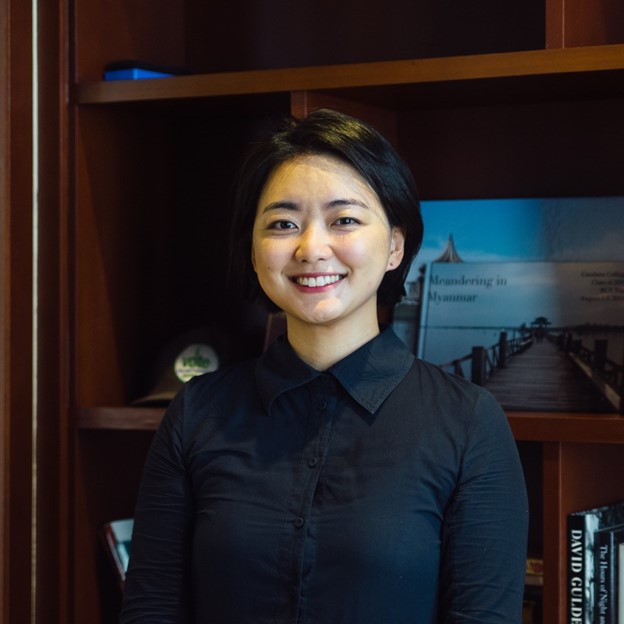 Assistant Professor of Social Sciences (Urban Studies) Ahn Chaewon does research on the social aspects of the city and their connection with physical and planning structures. Image provided by Asst Prof Ahn.
Assistant Professor of Social Sciences (Urban Studies) Ahn Chaewon does research on the social aspects of the city and their connection with physical and planning structures. Image provided by Asst Prof Ahn.
Impressed by the quality of her students’ submissions, Assistant Professor of Social Sciences (Urban Studies) Ahn Chaewon initiated the creation of a QMaps website to consolidate the qualitative maps and bring them to a wider audience. “The qualitative maps that the students have submitted in the course have been mind-blowing to me and I thought they deserved to be shared outside of the internal shared folder.”
Asst Prof Ahn’s students Ishmam Ahmed and Alvin Shrestha (both from the Class of 2023) worked with her to develop the project. Ishmam, an Urban Studies major, handled the frontend development and design of the website, while Alvin, a Mathematical, Computational and Statistical Sciences (MCS) major, was responsible for the backend development of the website, including the management of the website’s database and submission system.
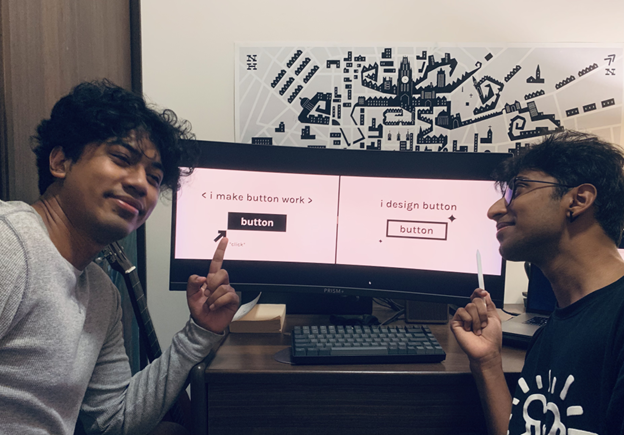 Ishmam (right) and Alvin (left) worked on the QMaps project together, from design to backend website development. Image provided by Ishmam.
Ishmam (right) and Alvin (left) worked on the QMaps project together, from design to backend website development. Image provided by Ishmam.
Sharing his experiences working on the project, Ishmam said, “When I started back in May, I was a little overwhelmed at first because I have never done web design alone before. I have always done it as a part of a team. Asst Prof Chaewon was really helpful. She sent me links so I could look at other web templates and other websites. She was always there to help me out and give references.”
“She is also super helpful in meetings. When we brought forth ideas, she would take them very seriously. She gave a lot of help and offered many perspectives on the project,” echoed Alvin.
The project also gave Alvin insights into an academic field beyond his MCS major. “Before the project, I never thought about maps or learned about GIS. This project was like a whole new domain for me. Now, I understand a lot better how wonderful maps are, especially such qualitative maps and how much information they reveal.”
Following the launch of the QMaps website, the team hopes that students outside of the Geospatial and Demographics Methods course, faculties, and staff will contribute their qualitative maps. To facilitate the submission process, the team has created a step-by-step guide on the website to help users create and upload their maps. “A physical event — like a “mapathon” — is something we can potentially host in the future as well, where participants can draw their maps by hand and upload them,” said Asst Prof Ahn.
Asst Prof Ahn also hopes that the QMaps project can be a platform for reflection. “The maps bring the experiences and the characters of our students vividly alive. They remind me that the Yale-NUS campus is where life unfolds and growth happens. I hope that the QMaps project provides the Yale-NUS community a space to reflect and communicate these aspects. Participation in the project can help us think about how to make the best of the remaining time here.”
As for the future, the team wishes for the website to serve as the College’s repository of memories. “This would be something we can look back on once we are not back here anymore,” Ishmam reflected.
Similarly, Alvin wishes that people who used to be from Yale-NUS College would find the website helpful for creating their maps to share with others about their experiences on campus.

